Blogs
Online Share Trading in Nepal: How to buy and sell shares in Nepal?

Online share trading is done in the secondary market. The secondary market is the platform where buyers and sellers meet each other to buy and sell shares virtually. Online share trading is done through the TMS (Trade Management System) account, accessible on devices such as laptops and smartphones. Online share trading in Nepal is performed from 11 am to 3 pm, 5 days a week (From Sunday to Thursday), with exceptions on national holidays. Before involving in online share trading you must have the following things:
- Basic Requirements for Share Trading
- Basics things to know before starting investment in Share Market
Having basic requirements and basic knowledge are not sufficient to succeed in the share market. You must have technical analysis and fundamental analysis skills to analyze market trends and future predictions. However, In this blog, you will learn the step-by-step process of Online Share Trading in Nepal.
Login to your TMS account
Every broker has a unique Broker number provided by the NEPSE. If you don’t know your broker number you can select it from the list of brokers in Nepal with the TMS URL we have listed on our site.
STEP 1: Log in to your TMS account.
The URL format for TMS login: https://tms[Broker number].nepsetms.com.np/login. Example: Broker number 58, the URL for this broker is https://tms58.nepsetms.com.np/login.
STEP 2: Your TMS login page will appear as below. Enter the Client Code/ User Name, password, and Captcha correctly. Click login
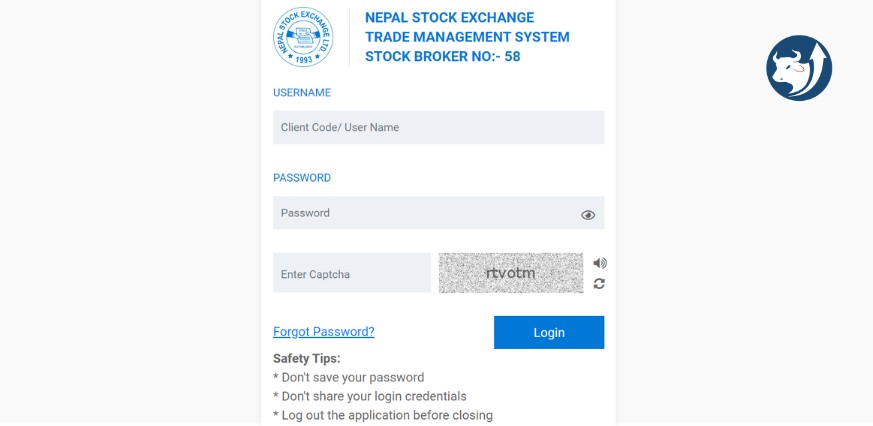
STEP 3: After login, you will see “NEPSE TMS DASHBOARD” as below.
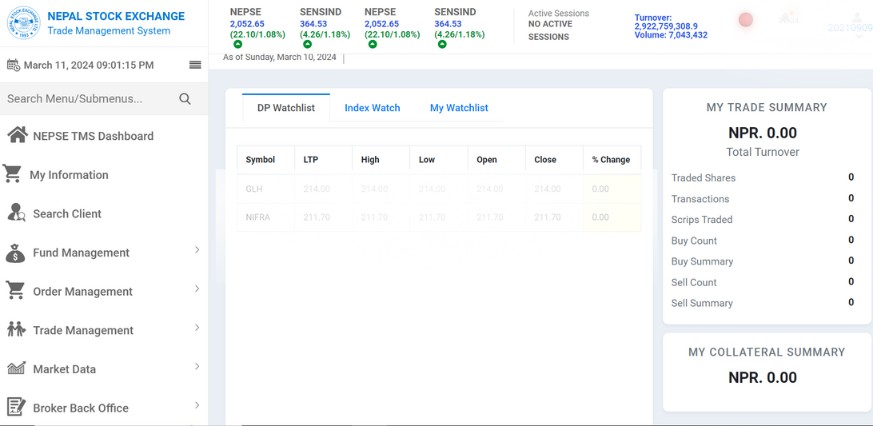
How to start online share trading in Nepal/buy and sell shares?
To buy and sell shares, go to “Order Management” → Click “Buy/Sell” below screen will appear. To purchase shares click “BUY” If you want to sell click “SELL” on the top right corner of the page.

How to buy shares online?
To buy shares online follow the given steps:
STEP 1: A blue dashboard will appear as shown below after clicking on the “BUY” button.
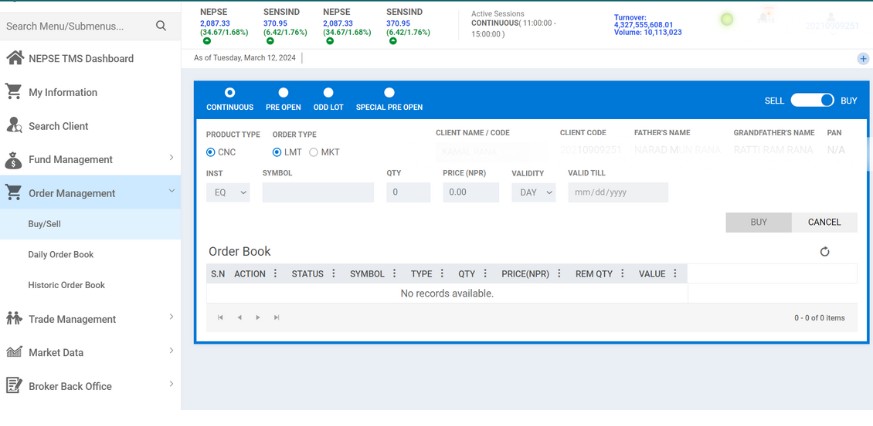
STEP 2: While placing a buy order you can place an order in two ways Limit order and Market order.
- Limit order: In limit order, you can set a price on which you prefer to buy the share. If any seller places a sell order at the same price, then your order will execute.
- Market order: Market order is where you buy shares from the market instantly at the best price available if the desired amount of shares are available.
STEP 3: There are two options “LMT- Limit Order” and “MKT- Market Order” under the “Order Type“. let’s place a limit order.
Now enter the symbol or name of the institute in the “SYMBOL” section. Enter the quantity of the Share Under “QTY”, and enter the price under the “PRICE” section as shown below. Click the “BUY” button.
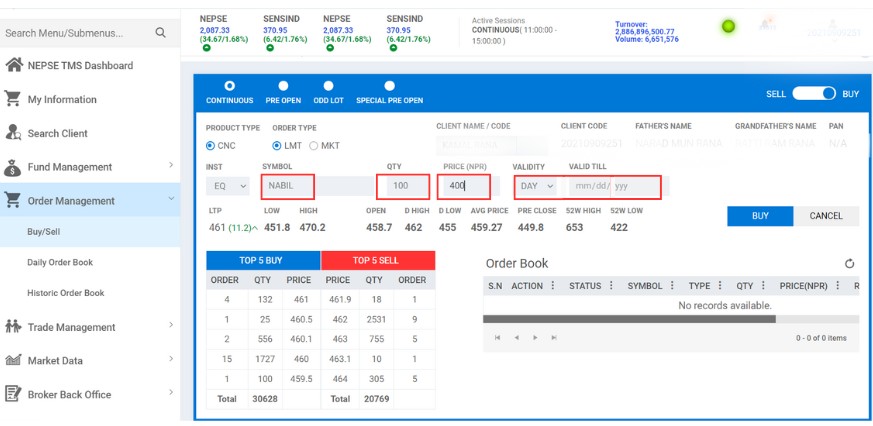
STEP 4: When you click “BUY” you will get a notification on the top right corner of the screen “New order request has been successfully placed” as shown in the image.
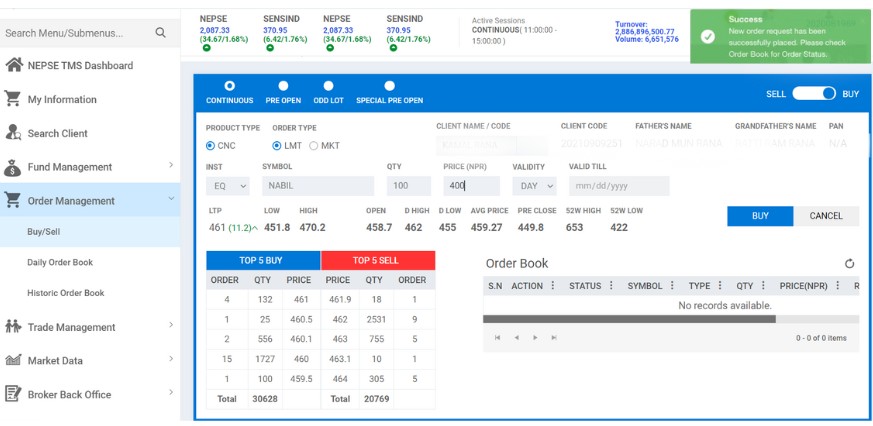
Note: If you have chosen a limited order, remember that placing an order doesn’t mean you have purchased shares. Your shares will be bought only if any seller places the sell order at your price and also meets the quantity of shares willing to buy.
It will take 2-3 days to transfer the share to your account you can check it from the Meroshare account.
How do you sell shares online in a TMS account?
NOTE: Before selling shares check how many shares you have, Click “Broker Back Office” → “DP Holdings”. Now you can see the quantity of your shareholding as shown in the image below.
It is important because “if you place a sell order for more shares than you own, you will face a closeout penalty. Therefore, you must complete EDIS after selling the shares. If the amount is insufficient during the eDIS repayment, a 20% penalty of the total amount will apply.”
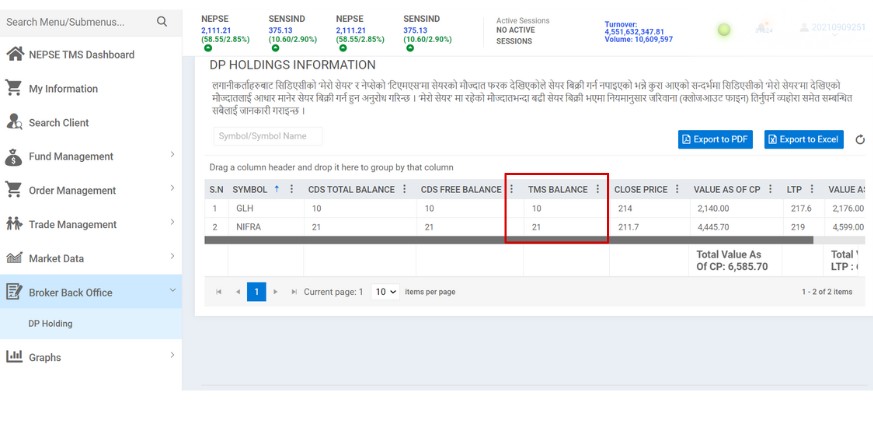
Step 1: After you click on the sell button a red TMS dashboard will appear as shown below. To buy shares online you must have collateral in your account. You can load Collateral in your NEPSE TMS account if there is no collateral.
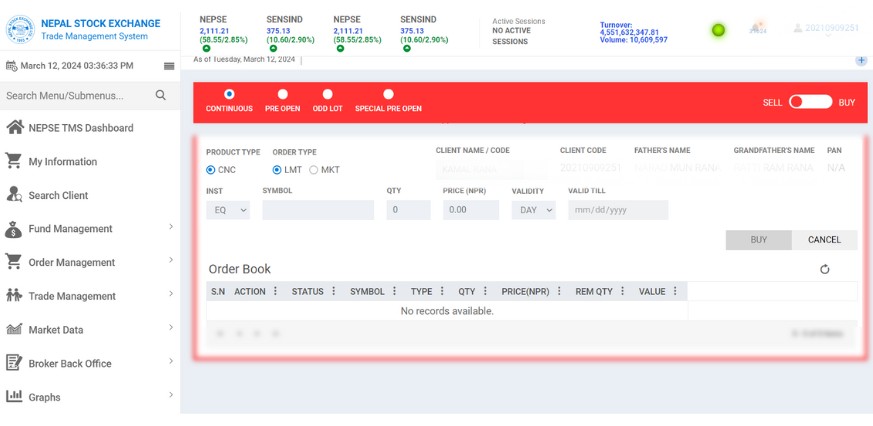
STEP 2: Enter the Symbol of the institution you want to sell under “SYMBOL”, quantity, and enter the price of the share for sale.

STEP 3: As shown in the image the table consists of two sections: “TOP 5 BUY” and “TOP 5 SELL”.
The blue table shows the data for buy orders and the red table shows the data for sell orders placed with different quantities and prices.
In the first row, 4 buy orders are placed for 132 units of shares, asking price is 461 and in the same row, 1 sell order is placed for 18 units of shares at the price of 461.9.
STEP 4: Suppose you own 200 units/kitta shares of Nabil Bank. If you place a sell order at the highest asking price at that time i.e. Rs. 461/kitta then your sell order will be executed instantly and your shares will be sold. Alternatively, if you set a higher selling price than the asking price, your sell order will remain open for the day until the order is executed. When your order matches a buying price, your shares will be sold. After selling the shares don’t forget to perform the EDIS i.e. transferring the shares to the buyer.
You may also like:
- Common mistakes to avoid when trading stocks
- How much should you pay as broker payment
- Basics to know before starting investment in Share Market
FAQs
What is stock market trading?
Stock market trading involves the buying and selling of shares from publicly traded companies in NEPSE to gain profit from price fluctuations. Through trading, you can own a portion of a company and potentially earn money as its value increases. At the same time, trading carries risks and requires careful research and strategy.
How to sell penny stocks?
To sell penny stocks, follow these steps:
- Open a brokerage account.
- Log in to the trading platform.
- Place a sell order by specifying the quantity and desired price.
- Review and confirm the sell order.
- Monitor the transaction for execution.
Can I sell shares without a broker?
Yes, you can buy or sell shares without a broker by using a direct stock purchase plan (DSPP). The company’s transfer agent manages the transaction in this process.
Best online brokers for stock trading?
Many brokers can help you with share trading, you can find the best broker in Nepal based on customer service, responsiveness, and investment skills.
When to sell stocks?
You can sell stocks in the following situations:
- when you’ve reached your profit target.
- When there’s a significant change in the company’s fundamentals, or if the stock becomes overvalued.
- When external factors impact the stock’s performance or if it falls below your predetermined loss limit.
Where can I buy and sell stocks?
You can buy and sell stocks through online brokerages, traditional brokerage firms, and direct stock purchase plans (DSPP).
Blogs
Birgunj Customs Office Collects Highest Revenue from Petroleum Imports

The Birgunj Customs Office has collected the highest revenue from the import of petroleum products in the first 11 months of the current fiscal year 2081/82. According to the office, a total of NPR 73.18 billion was collected in revenue from petroleum imports alone.
During this period, Nepal spent about NPR 174.09 billion to import five different types of petroleum products. These petroleum imports contributed 46.43% of the total revenue collected from the top 20 imported items, making it the most important source of income for the customs office.
Major Revenue Contributors from Imports

What Officials Say
Customs Chief Administrator Deepak Lamichhane stated that petroleum products and vehicle imports are the main sources of customs revenue at Birgunj. He highlighted that these two sectors consistently contribute the highest share of government income collected through imports.
Conclusion
The data from the Birgunj Customs Office shows that fuel and vehicles remain Nepal’s most heavily imported and taxed items. With more than 46% of the revenue coming from petroleum alone, any changes in fuel prices or import volumes can significantly affect national customs revenue.
AGM
NMB Laghubitta to Hold 12th Annual General Meeting on July 16
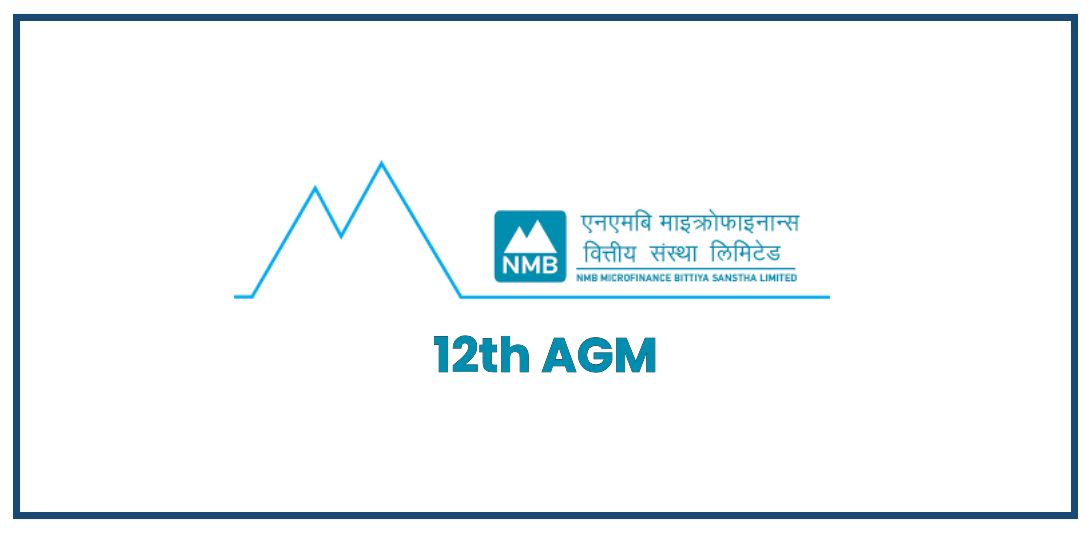
NMB Laghubitta Bittiya Sanstha Ltd., a licensed “D” class microfinance institution by Nepal Rastra Bank, has announced its 12th Annual General Meeting (AGM). The AGM will discuss financial performance, proposed amendments, and other key matters.
Key Details of the AGM
| Topic | Details |
|---|---|
| AGM Number | 12th Annual General Meeting |
| Date | Asar 32, 2082 (Wednesday, July 16, 2025) |
| Time | 9:00 AM |
| Venue | Hotel City Square Pvt. Ltd., Pokhara-8, New Road, Kaski |
| Book Closure Date | Asar 24, 2082 (July 8, 2025) |
| Eligibility Cut-off | Shareholders registered till Asar 23 are eligible |
| Share Registrar | NMB Capital Ltd., Baluwatar, Kathmandu |
| Official Website | www.nmbmicrofinance.com |
Agenda of the AGM
A. General Proposals
-
Discussion and approval of the Chairman’s Annual Report for FY 2080/81.
-
Approval of financial statements, including balance sheet, profit & loss, and cash flow for FY 2080/81.
-
Appointment of an auditor for FY 2081/82 and determination of their remuneration.
B. Special Proposals
-
Amendments in MoA/Bylaws regarding:
-
Promoter and public shareholding ratio to be set at 51% and 49% respectively.
-
Number of directors representing promoter shareholders.
-
-
Changes in board formation, number of members, and tenure.
-
Authorization to initiate a merger/acquisition with other “D” class microfinance institutions.
-
Authorization to make further amendments based on regulatory directives from Nepal Rastra Bank.
C. Miscellaneous
-
Discussion of any shareholder queries.
-
Clarifications will be provided by the Chairman or an authorized person.
Important Instructions for Shareholders
-
Share registration will be closed on Asar 24 for AGM purposes.
-
To attend the AGM, shareholders must carry:
-
Entry pass (attached to the annual report)
-
Share certificate or Beneficiary (BO) Account proof
-
Valid ID with photo
-
-
Shareholders must sign the attendance book at the venue starting from 8:00 AM.
-
Shareholders may appoint a proxy representative; however, the proxy form must be submitted at least 48 hours before the meeting.
-
Minor or mentally disabled shareholders must be represented by their registered guardians.
-
No bags or restricted items will be allowed inside the AGM venue.
-
Any shareholder inquiries must be submitted in writing at least 7 days in advance to the registered office.
Notice: NMB Laghubitta 12th Annual General Meeting (AGM)
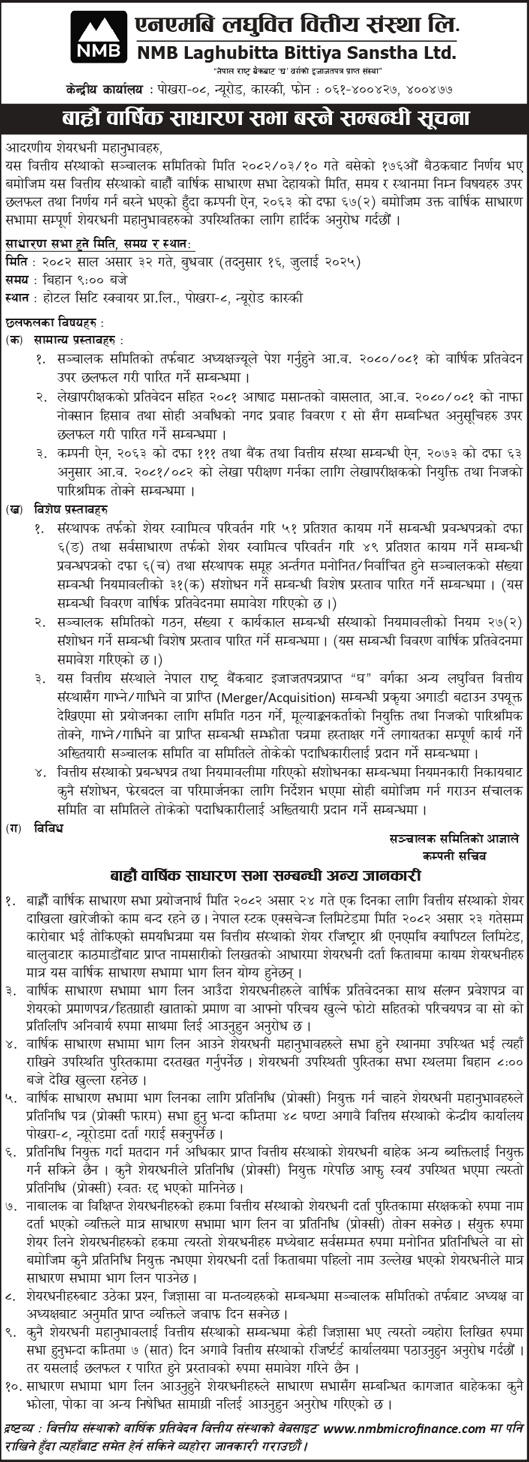
Blogs
Private Power Producers Protest ‘Take and Pay’ Provision in Budget
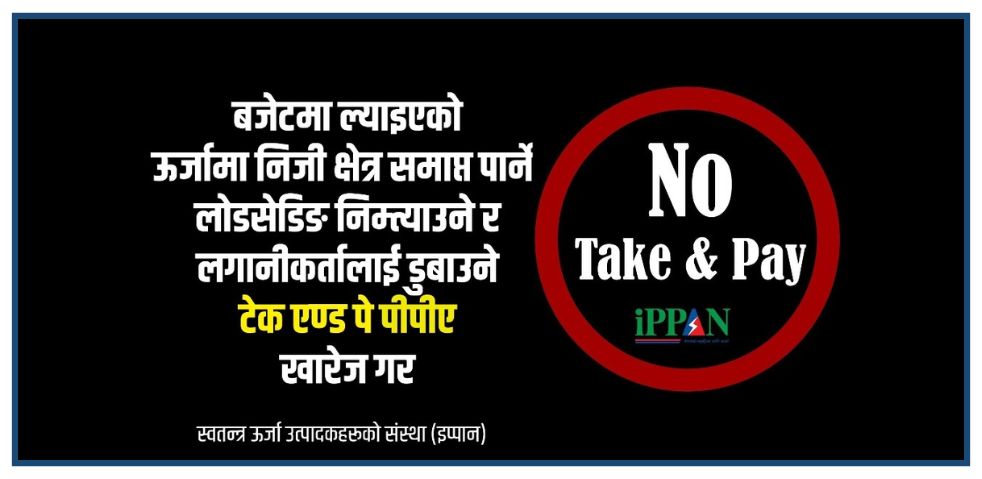
Private energy entrepreneurs in Nepal have taken to social media, protesting the government’s decision to introduce the ‘Take and Pay’ (Liu Ra Tir) system for electricity purchase agreements (PPA) in the new fiscal year budget.
Under this system, the government would only pay for the electricity it uses, instead of paying for the total electricity generated by hydropower projects. Entrepreneurs argue this move could severely hurt the private sector, discourage investment, and push the country back toward power shortages.
Online Campaign Targets Top Officials
Energy producers are now directly appealing to key government figures. They have publicly tagged Prime Minister Pushpa Kamal Dahal, Finance Minister Barshaman Pun, Energy Minister Shakti Bahadur Basnet, and NEA Executive Director Kulman Ghising on social media, urging them to withdraw the Take and Pay provision.
This digital campaign comes just days after developers handed over a memorandum to the Prime Minister and bombarded top officials with hundreds of SMS messages requesting the same.
Why Are Entrepreneurs Worried?
Entrepreneurs claim that this decision will:
- Weaken the private sector’s role in the energy industry
- Risk the return of load-shedding (power cuts)
- Causes financial losses to investors
- Damage the overall economy
The Independent Power Producers’ Association of Nepal (IPPAN) has strongly opposed the provision. According to IPPAN’s Vice President and protest coordinator Mohan Kumar Dangi, the policy shift will discourage private hydropower development, especially for Run-of-River (RoR) projects, which are most affected by the new model.
Ongoing Protests and Next Steps
Since Asar 6, private power developers have been staging a phase-wise protest. On the third day of their movement, they moved their campaign to social media to raise public awareness and pressure the government.
Dangi warned that if the government ignores these peaceful efforts, the protests will escalate. Planned steps include:
- Lobbying political party leaders in Parliament
- Launching a nationwide street protest
- Returning the keys of privately built hydropower projects to the government — a symbolic act of handing over control
Background: The Budget Controversy
The controversy started when the budget for FY 2082/83 (announced on Jestha 15) stated that all future PPAs for RoR hydropower projects would be done under the Take and Pay model only. This was a major change from the previous Take or Pay model, where producers were paid even if electricity wasn’t consumed, offering more security for private investors.
Conclusion
The ‘Take and Pay’ decision has sparked serious concerns across Nepal’s private energy sector. Developers fear this could lead to a slowdown in future hydropower investments, and possibly, a return to unstable electricity supply. With pressure mounting both online and offline, the government’s next move will be critical for the future of Nepal’s energy landscape.
-
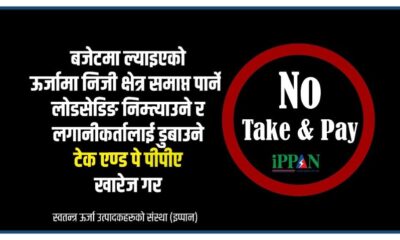
 Blogs3 days ago
Blogs3 days agoPrivate Power Producers Protest ‘Take and Pay’ Provision in Budget
-
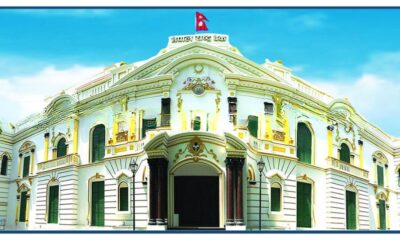
 Blogs3 days ago
Blogs3 days agoNepal Rastra Bank to Withdraw NPR 60 Billion from the Banking System on Monday
-
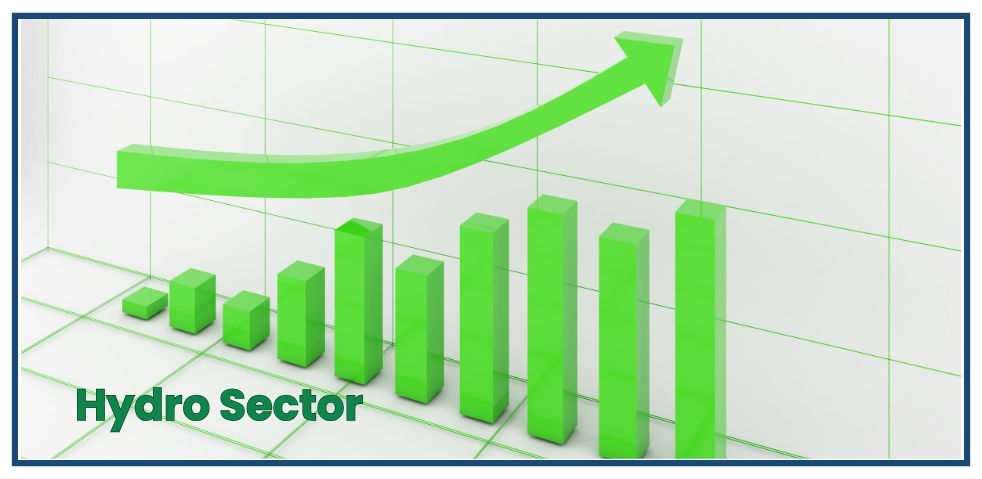
 Blogs6 days ago
Blogs6 days agoHydropower Gains 7.8% in One Month, Outperforming All Sectors
-

 Blogs1 year ago
Blogs1 year agoList of Stock Brokers in Nepal with NEPSE TMS Login – Updated
-

 Blogs3 days ago
Blogs3 days agoAsian Life Insurance to Issue Rights Shares from Asar 25
-

 Blogs3 days ago
Blogs3 days ago52-Week Low & High Microfinance Shares in Nepal: Current Status and Future Outlook
-

 Blogs3 months ago
Blogs3 months agoPure Energy IPO For General Public
-
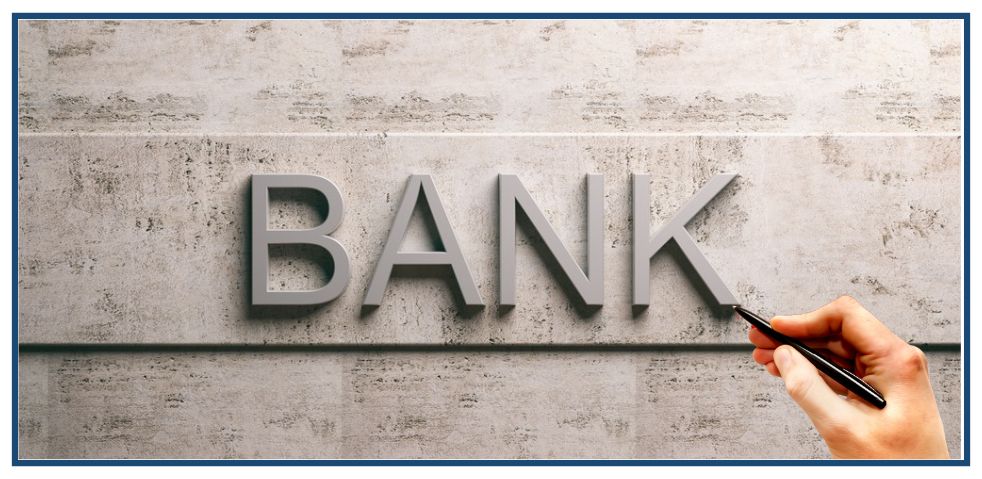
 Blogs1 week ago
Blogs1 week agoBanks Invest Rs. 16.45 Trillion in Directed Loans, 14% in Agriculture Sector | Says Nepal Rastra Bank




